|
4. Theme based workshops
Another workshop emphasis
was laid on three thematic sub-workshops to directly involve the
participants in the project work. With regard to preservation, development
and management as well as sustainable use of cultural landscapes and
heritage, three themes were considered important:
Plenary
session
The themes were introduced by the workshop chairs to give an overview about
the state of the art and the developments in the region. In a second phase,
the participants considered their vision of a cultural landscape in 2030. A
third part focused on discussing strategies to reach the aims.
The results of the different sub-workshops were as follows:
4.1
Settlement development (Workshop A)
Smaller settlements,
villages and cities in the region have been changing over decades. These
changes are the result of the regional social as well as economic
development, Periods of increasing or decreasing population, changes in the
economic structure and the effects on the average income as well as the
general appreciation of a region or landscape are the main elements which
have their effects on settlements. This continuous process of changing makes
a living landscape.
In general, settlements are
part of the cultural heritage and the cultural landscape of a region. One
can read the cultural history in the individual buildings but also in the
city plans. In the processes of change, it is important to take those values
into account. It needs integrated management. What are the effects of the
major developments on the settlements, especially on the landscape and the
heritage and can we manage them?
The actual developments in
settlements differ in the various regions. It depends partly on differences
in location. For example the proximity of a ‘nice’ coast (seasonal living,
tourism) or a bigger city (employment).
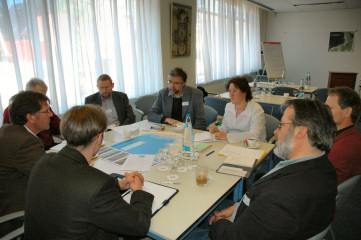 Also the accessibility of
settlements seems to be a very important factor (roads, public transport,
high speed internet) in the growth of settlements. These and other elements
effect the heritage and landscape. But also vice versa; values of cultural
heritage and landscape can contribute to the development of settlements !
Living in villages with a special cultural environment is wanted, so people
move to those places. Tourist’s look for those environments to visit and to
stay overnight. Also the accessibility of
settlements seems to be a very important factor (roads, public transport,
high speed internet) in the growth of settlements. These and other elements
effect the heritage and landscape. But also vice versa; values of cultural
heritage and landscape can contribute to the development of settlements !
Living in villages with a special cultural environment is wanted, so people
move to those places. Tourist’s look for those environments to visit and to
stay overnight.
One can say that a vivid
region, with a well balanced demographic structure, job’s and public
services is part of maintaining the cultural heritage in the settlements. A
lack of jobs and income will lead to less investments in individual housing
as well in the public domains (buidings and places). Thus a sustainable
economic development contributes to the cultural heritage in settlements.
But there is another
important factor; being the awareness on quality. Decisions on how
settlements should develop
 (extension of urban area’s, urban renewal, urban
design) or individual decisions by owners on (re-)building must be inspired
by the awareness of the cultural heritage and urban landscape. This sense of
quality has to rise in the local government and administration and should be
used in spatial policy and in some cases in building guidelines. The participants formulated the following visions regarding the development
of the Wadden Sea Region in respect of cultural landscapes and heritage: (extension of urban area’s, urban renewal, urban
design) or individual decisions by owners on (re-)building must be inspired
by the awareness of the cultural heritage and urban landscape. This sense of
quality has to rise in the local government and administration and should be
used in spatial policy and in some cases in building guidelines. The participants formulated the following visions regarding the development
of the Wadden Sea Region in respect of cultural landscapes and heritage:
Visions:
-
The Wadden Sea Region as a
living area with more private property, ownership and estates.
-
Increasing trend to live
in small villages, which keeps the rural area vivid.
-
The Lancewad area will
have changed from a remote area to a living area with more infrastructure.
-
A good accessibility to
and within the area will be guaranteed.
-
The Lancewad area will be
more attractive for tourism. This will include a limited mass tourism,
which has a long tradition on the islands and, small scale tourism on the
mainland.
-
People will focus on
characteristics and tradition in the rural areas. Also the pure landscape
will attract people.
-
In the whole coastal zone
there will be no deserted settlements in wintertime, the area will be
attractive all-season.
-
The Wadden Sea Region will
become a sustainable area where people live and work.
In
order to work towards the vision, the following strategies were mentioned:
Strategies:
-
Local authorities need
more influence and responsibilities on the development of the region to
emphasize regional matters.
-
Education programs on
quality management for authorities have to be initiated.
-
Implementation of specific
construction regulations for buildings to safeguard the cultural
environment.
-
Sound cooperation and
common guidelines in the Wadden Sea countries to preserve and maintain the
common heritage.

4.2 Development of rural areas (Workshop B)
Rural areas constitute the
largest part of the Wadden Sea Region and have always been very dependant on
the varying effects of nature and economic markets. Phases of slumps in
economic activities follow times of relative wealth, as the regional
economic success has always been dependant on the changing markets.
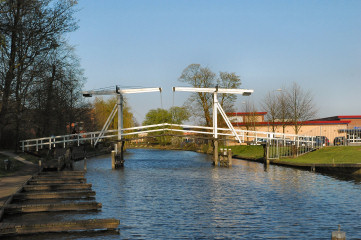 In this context, the
closeness to the sea mostly turned out to be a stimulator to the economy,
the advantage of which was short distances between the manufacturer and the
sales market. With an ever growing mobility of the European societies, in
combination with the further development of infrastructure, this advantage
is becoming increasingly counterbalanced. It is not astonishing that
the rural areas of the Wadden Sea have been most strongly effected by the
structural change, especially the agricultural sector during the last 20
years. In this context, the
closeness to the sea mostly turned out to be a stimulator to the economy,
the advantage of which was short distances between the manufacturer and the
sales market. With an ever growing mobility of the European societies, in
combination with the further development of infrastructure, this advantage
is becoming increasingly counterbalanced. It is not astonishing that
the rural areas of the Wadden Sea have been most strongly effected by the
structural change, especially the agricultural sector during the last 20
years.
Traditional
strategies of land use are becoming futile. As some farmers are trying to
seek their advantage in turning to industrialized agriculture, an ever
increasing number of small scale farms have to resign.
The following questions will have to be dealt with: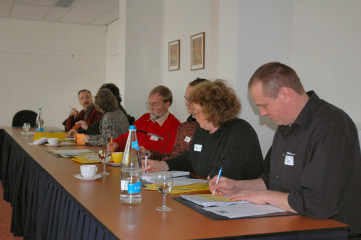
What is going to happen to
these open areas?
What are the effects of the change on the natural
environment ?
In addition to this, there
is a development of the sea ports to “super-ports” with a more specialized
infrastructure, which will also be effecting the land management.
How do we evaluate such a
change? Can we strictly oppose? Does it have to be vigorously favored?
Considering such a
background, universal answers are hardly convincing. Therefore all
participants of this workshop were asked about what the areas under
investigation will look like - in the year 2030. Furthermore, a worst case
situation was compared with the formulated visions, also in order to develop
strategies to work towards the vision.
Visions:
-
With regard to the
demographic development, the Wadden Sea Region will entail stable
communities with perspectives for further development, more possibilities
for individual decision making and a controlled land use.
-
The local people will
identify themselves with their region.
-
The cultural heritage
landscape will remain readable and will be sustainably managed. The
invisible history will also get wide attention.
-
The extensive and
sustainable land use will be in balance with nature and cultural heritage
preservation.
-
Developments will consider
buffer zones for the heritage, taking into account the typical openness
and will, where ever possible, restore characteristic landscapes.
-
Tourism will be a small
scale business and adapted to the local way of life. The focus will be
more on recreational use than on adventure or competitive economic
business.
-
In agriculture, a
continuity of traditional farming, taking care of cultural and natural
heritage, will be guaranteed. An emphasis will be laid on food quality and
the production for the local market. Monocultures, scale enlargement and
horticulture belong to the past.
In
order to work towards the vision, the following strategies were
recommended by the participants:
Strategies
-
To attract the
people staying in the region by providing
sufficient economic perspectives and social as well as municipal
facilities.
-
Promoting and
supporting a sustainable regional economy. Local quality products,
sustainable use of natural and cultural assets.
-
Integrated
management through ICZM approaches
-
Financial
support for small scale farming and landscape management.

4.3 Economic development and use
(Workshop C)
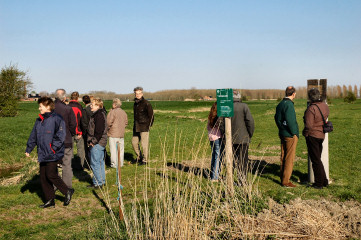 The Wadden Sea Region is an area of great opportunities and
potential for economic and ecologic developments. A variety of demands for
utilization and protection have to be taken into account to aim at a
sustainability approach. Harbor development, coastal protection, tourism and
the utilization of wind energy, nature and cultural landscape protection are
some examples to show the manifold interests in the region. The Wadden Sea Region is an area of great opportunities and
potential for economic and ecologic developments. A variety of demands for
utilization and protection have to be taken into account to aim at a
sustainability approach. Harbor development, coastal protection, tourism and
the utilization of wind energy, nature and cultural landscape protection are
some examples to show the manifold interests in the region.
A sustainable approach for the utilization of the potential
of the Wadden Sea region, and, therefore its sustainable development, is to
analyze potential conflicts and to develop strategies for solutions. The
Integrated Coastal Zone Management (ICZM) approach is supposed to be part of
the common strategy. Experiences with ICZM in the framework of the Wadden
Sea Forum (WSF) project show that this approach is a suitable strategy to
further the economical development of the coastal zones while conserving its
natural and cultural resources at the same time.
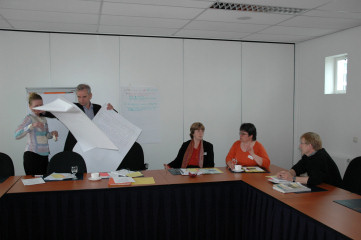 Regarding economic development and use, sound planning
instruments are re-quired. The relevant planning takes place on a municipal
level, due to the commu-nity's sovereign planning rights. For these purposes,
appropriate and proven instru-ments of planning and coordination are
existing. For the sustainable use and pre-servation of the Wadden Sea
Region’s cultural landscapes and heritage values, planning instruments with
a broader approach are needed. The context of cultural entities, the common
historical identity of the Wadden Sea Region and herewith, a cross border
view, have to be integrated in the planning procedure. The traditional frame
of competencies and participation should be exceeded to meet the
requirements. Regarding economic development and use, sound planning
instruments are re-quired. The relevant planning takes place on a municipal
level, due to the commu-nity's sovereign planning rights. For these purposes,
appropriate and proven instru-ments of planning and coordination are
existing. For the sustainable use and pre-servation of the Wadden Sea
Region’s cultural landscapes and heritage values, planning instruments with
a broader approach are needed. The context of cultural entities, the common
historical identity of the Wadden Sea Region and herewith, a cross border
view, have to be integrated in the planning procedure. The traditional frame
of competencies and participation should be exceeded to meet the
requirements.
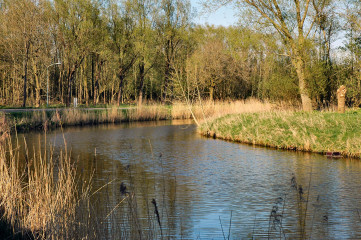 At the beginning of the workshop, the participants
considered a vision dealing with
the situation of the cultural landscape and heritage in the year 2030.
A second step was a brainstorm about strategies to achieve the vision. At the beginning of the workshop, the participants
considered a vision dealing with
the situation of the cultural landscape and heritage in the year 2030.
A second step was a brainstorm about strategies to achieve the vision.
Visions:
-
The local
people identify themselves with their region. Many
cultural
landscape and heritage elements will leave their marks in the region.
-
It will be
widely recognized that the identification with the region is the most
valuable capital.
-
Sustainable
communities will shape the Wadden Sea Region, an emphasis will be laid on
quality (living, products, recreation).
-
Sustainable
tourism will be an important sector in the region and will be adapted to
the local identity. No large infrastructure facilities will disturb the
cultural landscape.
-
“Close to
nature tourism” will have a big share in the tourism sector.
-
In the
framework of a sustainable development of the region, different zones and
buffer zones will be designated to balance priorities of e.g.
nature/industry and towns/ agriculture.
-
Agriculture
will be a small scale and environmental friendly business.
-
Rural areas
will be considered as valuable regions with a sound protection status. The
characteristics of these areas, the openness and other specific features
of the marsh, will be better maintained.
-
Economical
development and activities ensure the preservation of the landscape and
heritage and will make use of the natural and cultural values for the
development of the region.
-
Economy will
be orientated ecologically and managed without a complex infrastructure.
-
Economic
development will be based on innovation and regional resources.
Regenerative energy will be extended to a “energy valley”, also using the
tide as an energy source.
-
An
integration of landscape and seascape with regard to integrated
development and management will be undertaken.
In order to
work towards the vision, the following strategies were recommended by the
participants:
Strategies
-
Provision of
education programs/facilities for locals and visitors for better
information and knowledge about the area, natural development, cultural
history and use.
-
Financial
support for certain areas within the Wadden Sea Region to make a
sustainable development and the use of the heritage possible.
-
Spatial planning should be
carried out with an integrated approach, taking into account all relevant
aspects and involving all stakeholders.
-
All relevant
entrepreneurs, locals and politicians have to be involved in the
development processes of the region which concern cultural landscape and
heritage issues.
-
Increase of
awareness of the unique landscape and cultural heritage to enhance the
identity of the region.
-
Initiatives
for regional programs to contribute to a healthy industry and to an
innovative economy to keep the region vivid and alive.
-
A strong
integration of the social dimension in the development of the region and
the beneficial use of the cultural heritage.
-
Strengthening
of a sustainable regional economy by promoting local quality products.
(labelling ?)
|









